Lilacs (Syringa spp.) are edible, and their flowers can be used in culinary applications. Lilac flowers have a delicate floral aroma and flavor, which can vary slightly depending on the lilac variety.
Are lilacs edible?
Yes, lilacs are edible. The most commonly cultivated lilac varieties for culinary use are typically Syringa vulgaris cultivars, which include a range of flower colors from purple to white:
- Syringa vulgaris ‘Charles Joly’: This variety features deep purple flowers and is known for its strong fragrance. The flowers have a sweet and slightly fruity flavor, making them suitable for use in various dishes.
- Syringa vulgaris ‘President Grevy’: With double lavender-blue flowers, this lilac variety is appreciated for its fragrance. Its flowers have a delicate flavor that can be used to add a touch of elegance to culinary creations.
- Syringa vulgaris ‘Krasavitsa Moskvy’ (Beauty of Moscow): This lilac variety has light pink to white flowers with a pleasant fragrance. The flowers are edible and can be used to impart a subtle floral note to dishes.
- Syringa vulgaris ‘Wedgwood Blue’: Known for its light blue flowers, this lilac variety has a mild fragrance and a delicate flavor. Its flowers can be used to add color and flavor to culinary creations.
- Syringa vulgaris ‘Primrose’: This lilac variety features pale yellow flowers with a mild fragrance. The flowers are edible and can be used to create visually appealing dishes.

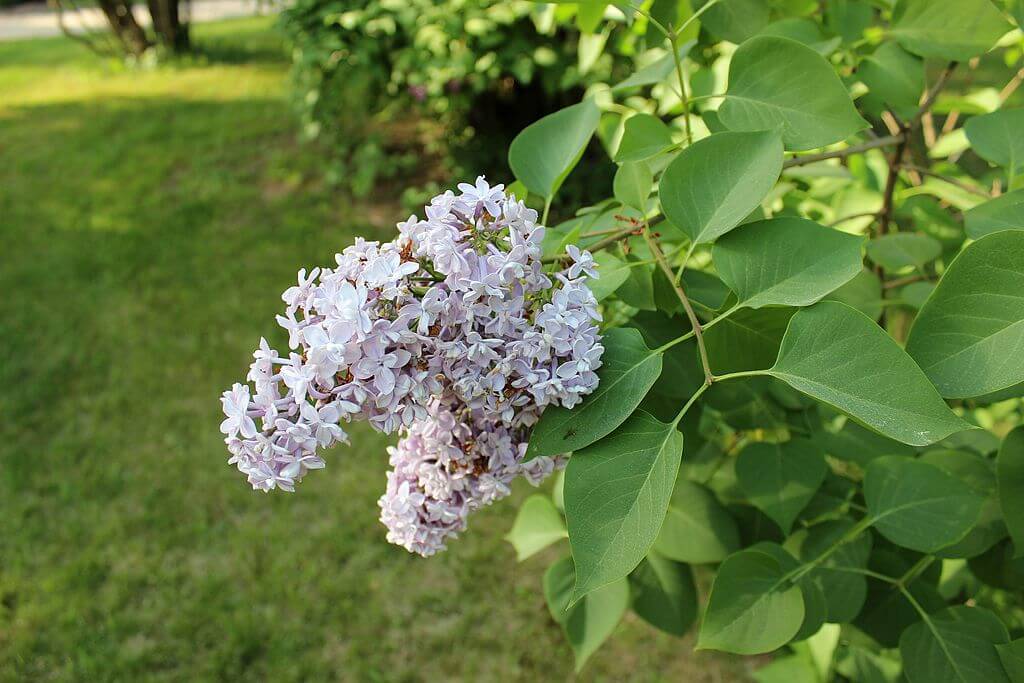
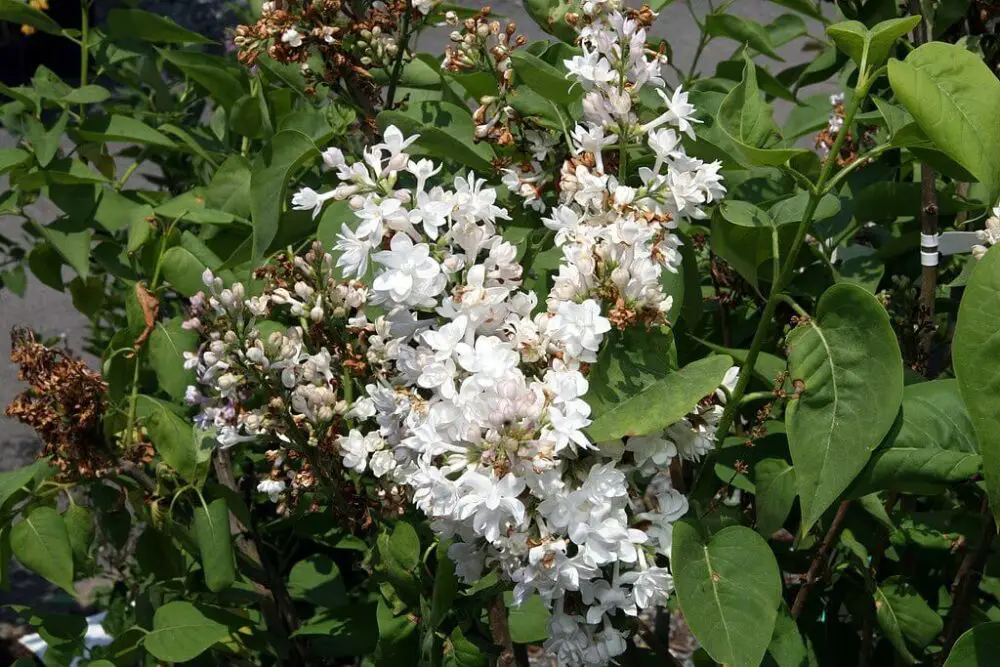
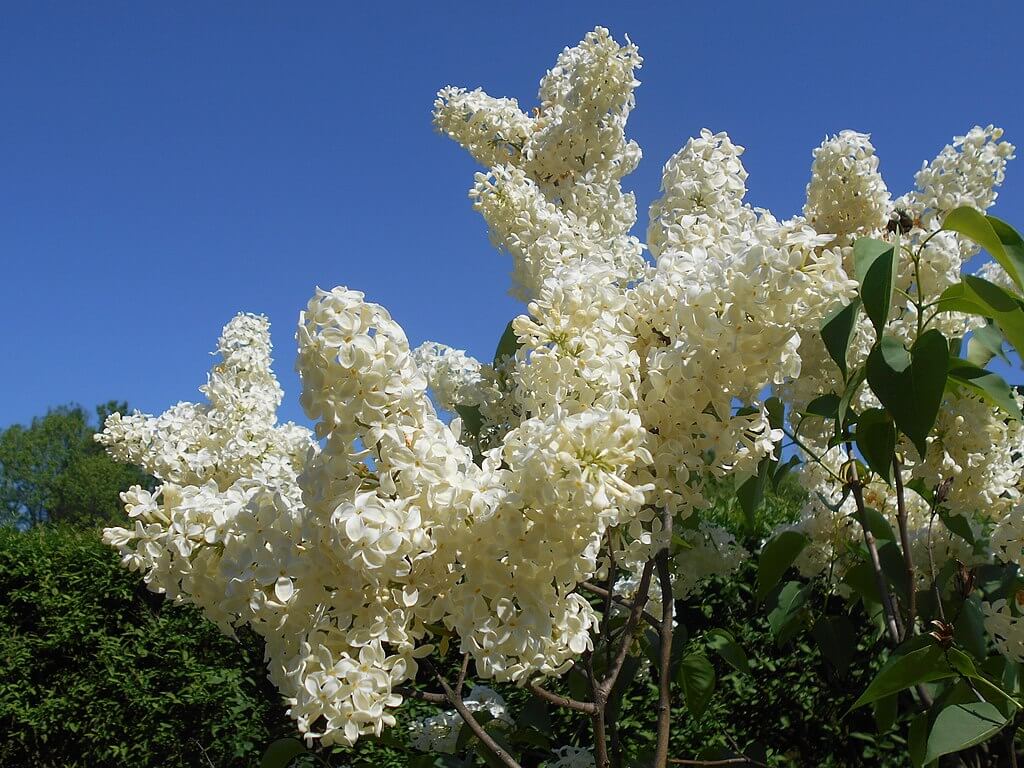
Non-edible varieties
While many lilac species are considered safe and even edible in small quantities, there are some lilac species that are not commonly used for culinary purposes due to potential bitterness, lack of flavor, or other factors.
These include:
What Are You Foraging For Right Now?
We're thrilled to hear your ideas. What would you like to submit today? Feel free to share your thoughts and experiences with us.
- Japanese Tree Lilac (Syringa reticulata): The flowers of Japanese tree lilac are not typically used for culinary purposes. They are larger and have a different flavor profile compared to common lilac varieties, often described as lacking the sweet fragrance and flavor associated with edible lilacs.
- Persian Lilac (Syringa x persica): While not toxic, the flowers of Persian lilac are not widely used in cooking due to their relatively mild fragrance and flavor compared to other lilac species.
- Syringa pubescens (Downy Lilac): This species is not commonly known for its culinary use, and its flowers may not have the same pleasant fragrance and flavor as some other lilac varieties.
- Syringa microphylla (Littleleaf Lilac): The flowers of this species are smaller and may not have the same culinary appeal as larger-flowered lilacs.
Can lilacs be eaten raw?
Yes, lilacs are edible raw. It is not the preferred method of consumption, but there are no dangers to eating lilac blossoms raw.
What does lilac taste like?
Lilac flowers have a delicate and distinct flavor that is often described as sweet, floral, and slightly perfumed. Some people find lilac flowers to have a flavor reminiscent of honey or light floral notes.
How do you cook with lilac?
Lilac flowers can be used in both sweet and savory dishes. Here are some ways they can be used:
- Infusions: Lilac flowers can be used to infuse flavor into syrups, honey, and vinegar.
- Baked Goods: Lilac flowers can be added to cakes, muffins, scones, and other baked goods for a unique floral touch.
- Salads: Lilac flowers can be added to salads to provide color and fragrance.
- Garnishes: Lilac flowers can be used as a decorative garnish for various dishes.
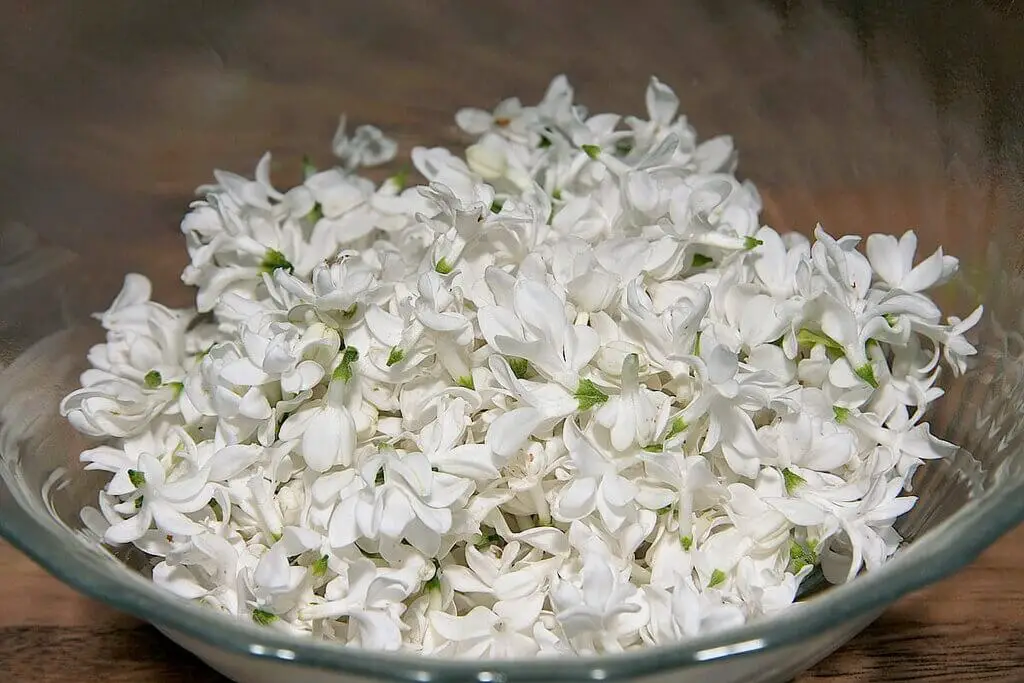
Our favorite ways to use lilac flowers in the kitchen
Infused water with lilac flowers
There’s no shortage of delicious lilac recipes out there. One of the simplest ways to use fresh lilacs is to put the blossoms, or even a few stems of lilacs, into a water pitcher, add ice and a hint of lemon.
Infused sugar with lilac flowers
Another easy method to preserve lilacs is with infused sugar, which can then be used in baking or to sweeten drinks.
Ingredients:
- 1 cup of sugar
- 1/2 cup of lilac blossoms
- Mason jar
(To make a larger quantity, use 2 parts sugar to 1 part lilac blossoms)
Instructions:
- Layer the sugar and lilac blossoms in the mason jar.
- Seal and store in a cool, dry place for up to one week (or until the sugar is dry, as it takes on the moisture from the lilacs).
- Shake the jar daily to help infuse and prevent clumping.
- Once ready, sift the sugar to separate it from lilac blossoms.
Lilac syrup
Lilac simple syrup is another easy way to make lilacs edible and can be used to sweeten your favorite beverage.
Ingredients:
- 2 cups of sugar
- 2 cups of water
- 1 cup of lilac blossoms
- A handful of blackberries or blueberries
Instructions:
- Combine all ingredients in a pot and bring to a boil.
- Stir until the sugar is dissolved, then turn off the heat and allow to steep (the longer, the more lilac flavor).
- Strain the syrup and store it in an airtight container in the fridge.
- Lilac simple syrup is good for up to 10 days.
Lilac honey
Lilac honey is another simple method to preserve and use your lilac blossoms. Use it to sweeten your oatmeal, yogurt, toast, tea, or wherever else you regularly add honey.
Ingredients:
- Lilac blossoms
- Honey
- Mason jar
Instructions:
- Add enough lilac blossoms to fill your mason jar.
Add honey to the top, waiting for it to settle to see if you need to add a little more. - Seal your jar and store it in a cool, dry place for several weeks.
- Every couple of days, stir the mixture by flipping the jar upside down and right side up several times.
Candid lilacs
Candied lilacs are a delightful and visually appealing treat that can be used to garnish desserts, cakes, cupcakes, pastries.
Ingredients:
- Fresh lilac blooms (make sure they are clean and free from pesticides)
- Egg white wash (lightly beaten egg white mixed with a little water)
- Fine granulated sugar
Instructions:
- Gently remove the individual lilac petals from the flower clusters. Lightly brush each lilac petal with egg white wash. Ensure that the petal is evenly coated but not dripping.
- Dip the coated lilac petals into a bowl of fine granulated sugar. Make sure to coat both sides of the petals with a thin layer of sugar.
- Place the sugared lilac petals on a wire rack to dry. Allow them to air dry for several hours or overnight until they are no longer sticky.
- Once the candied lilac petals are completely dry, you can store them in an airtight container with a layer of parchment paper between the layers to prevent sticking.
How to make Lilac tea
Another delectable drink to enjoy with lilac blossoms is lilac tea. It can be mixed with other flavors or used on its own. It works well as both a hot or iced tea.
Ingredients:
- Fresh lilac flowers (petals only)
- Hot water
Instructions:
- Harvest Lilac Flowers: Harvest fresh lilac flowers with vibrant petals. Choose flowers that are free from pesticides and chemicals.
- Rinse Petals: Rinse the lilac petals gently under cool water to remove any dust or debris.
- Prepare Water: Boil water and allow it to cool slightly. The water should be hot but not boiling when you pour it over the lilac petals.
- Infuse Lilac Petals: Place a handful of lilac petals (about 1-2 tablespoons) into a teapot or cup. Pour the hot water over the petals.
- Steep: Cover the teapot or cup with a lid or saucer and let the lilac petals steep in the hot water for about 5-10 minutes. Steeping time can vary depending on your taste preference.
- Strain: After steeping, use a fine-mesh strainer or tea infuser to strain out the lilac petals, leaving you with clear lilac-infused tea.
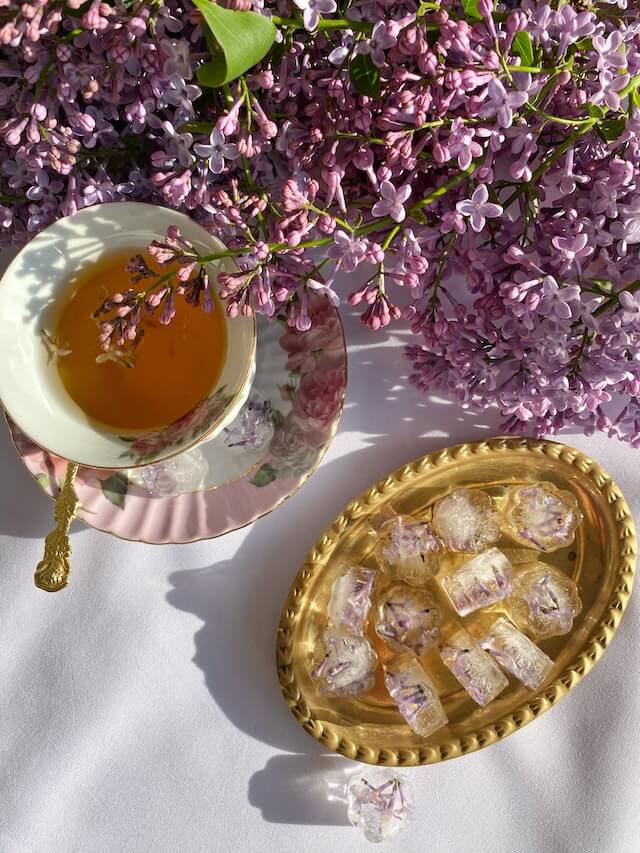
Are there health benefits to eating lilacs?
Lilacs are often consumed in small amounts as a culinary delicacy and for their aromatic qualities rather than for their specific health benefits.
While they are not a significant source of essential nutrients, some traditional herbal practices attribute certain potential benefits to consuming lilac flowers in moderation:
- Antioxidant Properties: Lilac flowers contain natural compounds, including flavonoids and polyphenols, which are known for their antioxidant properties. Antioxidants help combat oxidative stress and may have potential health benefits.
- Mild Relaxant: The delicate aroma of lilac flowers may have a mild relaxing and calming effect. Some people enjoy lilac-infused teas or foods for their soothing qualities.
- Aromatherapy: Inhaling the scent of lilac flowers may have mood-enhancing effects, promoting relaxation and reducing stress.
Where can you find lilacs in nature?
Lilacs are not typically found in their wild, native form in natural landscapes. They are more commonly cultivated as ornamental shrubs in gardens, parks, and urban areas.
Most of the lilacs you encounter will likely be in human-planted settings rather than growing naturally in the wild.
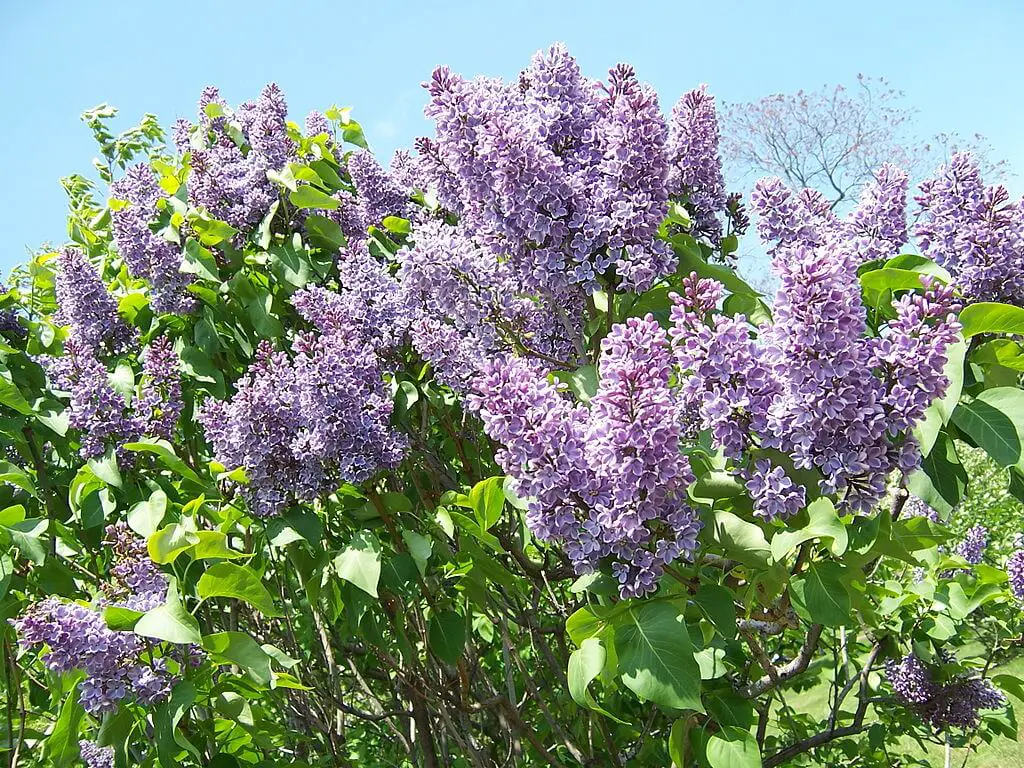
Are lilacs easy to cultivate?
Yes, lilacs are considered to be relatively easy to cultivate, especially in the right growing conditions.
Here are some key points to consider when cultivating lilacs:
- Climate: Lilac bushes thrive in temperate climates with cold winters and warm summers. They require a period of winter chill to flower properly. However, there are some varieties that are better suited to milder climates.
- Sunlight: Lilacs prefer full sun, meaning they need at least 6 hours of direct sunlight per day to grow and bloom well.
- Soil: Well-draining soil is essential for lilacs. They prefer slightly alkaline to neutral soil pH. Amending the soil with organic matter before planting can improve drainage and soil fertility.
- Watering: Lilacs prefer consistent moisture but do not like waterlogged soil. Water deeply when the top inch of soil is dry, especially during dry periods.
- Spacing: Plant lilacs with enough space between each bush to allow air circulation and prevent overcrowding.
- Pruning: Regular pruning helps maintain the shape of the shrub, encourages new growth, and promotes healthy flowering. Prune after flowering to avoid cutting off next year’s flower buds.
- Fertilization: Lilacs don’t require excessive fertilization. A balanced fertilizer applied in early spring is usually sufficient.
Our tips on Harvesting lilacs
Lilac blooms in the springtime. In warmer areas, they may bloom as early as April. In northern climates, they bloom in May. They don’t last long either, blooming for about 2-3 weeks, so act fast.
- The best time of day to gather lilacs is early morning or late in the day. Choose stems where most of the flower blossoms are opened, as they do not continue to unfold after being cut.
- Cut the stem below the lilac blossom. Wrap in wet paper towels until you are home and can put them in water or use them immediately. They can be stored in the fridge for up to a week.
- Remove the flower blossoms from the stem by hand or with a pair of scissors. Take caution to avoid any woody stems. This process does take some time but is worth the effort.
- If you want to keep your lilac blossoms for later, they can be frozen. Line a baking sheet with parchment paper, lay out the cut blossoms, and place them in the freezer. Once frozen, put in a baggie and store for up to 6 months.
- They can also be dried by hanging upside down in a cool, dry area. Once dried, pull off the lilac blossoms and store them in an airtight container away from light and humidity.
Rachel Schmeltzer is a writer, mom, teacher, and dreamer. She enjoys reading, traveling, history, spending time with her boys and her cats, and foraging in the woods of Minnesota.

